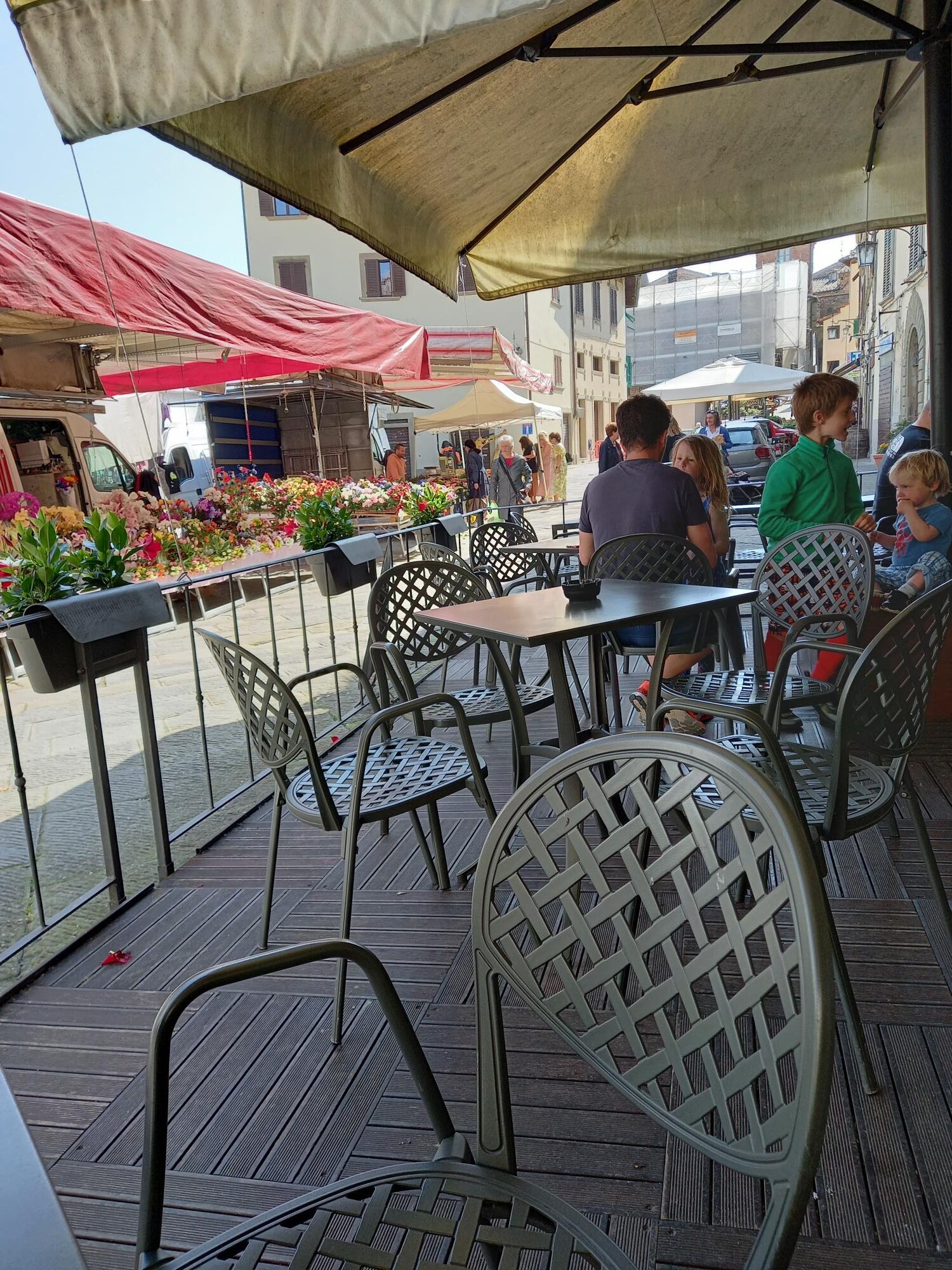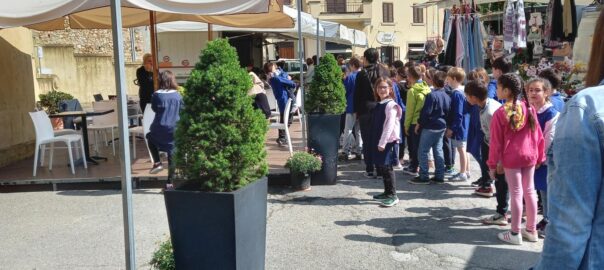A friend from London has been visiting for a few days, and he has given me the opportunity to see Anghiari through different eyes. On reflection, I think that my first post might have given a rather pessimistic picture of the future for life in the historic centre. So, in the light of Mark’s visit, I’d like to revise that now. In fact, Mark noted how lively the town was, and that there was a real sense of historical continuity in everyday rituals.

First, I should clarify: Anghiari has not turned into a museum, like, say, San Gimignano, nor has the medieval part of town become abandoned like so many smaller hilltop towns, particularly in Southern Italy. The changes that I’ve spoken about are more subtle than this – they are long term trends. However, there are counters even to those trends which auger well for the future of Anghiari, and the community here is very active in keeping traditions and the old town alive.
Anghiari continues as a cultural centre, busy with concerts and exhibitions. And, as Mark observed, there is art absolutely everywhere – you just have to step into one of the many churches, all of which are open most of the time, and there it is. In the piazza del popolo in the medieval centre, where the comune offices are located, you will find the Free University of Autobiography, and the School of Music, (scuola media, ‘middle school’). With the constant to and fro of teachers, students and parents, real life goes on here in the old town.
As Mark and I were walking down through the alleys to a bar for coffee on Saturday morning, we were greeted by the sound of excited children: the medieval town was full of groups of students, accompanied by parents and teachers, moving from one location to another to do dramatic performances. They might not be living here now, but families still inhabit these ancient spaces.
We were going to Cafè Garibaldi, one of the 5 or so bars in the centre of Anghiari, all of which have regular everyday customers. Piazza Baldaccio/Garibaldi, the centre of everyday life now, is located just outside the walls in the renaissance part of town. When the sun comes out, it gets busy, and there are a lot more people about on market day. With improved weather, the outside areas of bars in this piazza fill up with tourists (who come from elsewhere in Italy, other European countries, as well as North America). Tourists are welcomed here, but the community is careful that Anghiari not become another San Gimignano. It is also sufficiently out of the way to avoid becoming liked Florence.
On Saturday evening, Mark and I had dinner at Talozzi (also located just outside the walls), where there was a mix of generations, and mostly locals. Afterwards, we noticed that a new wine bar in the main piazza was crowded with young people sitting at tables outside, and that a restaurant located inside the walls, in the heart of the old town, was full of families, who would definitely have been Anghiaresi.
Returning to the question of the habitation of old town centres, it seems that the medieval centre is becoming repopulated with younger people. Some of these are Anghiaresi. Others are people who able to work from home, looking for an alternative to city life in response to covid. A young couple with a child are renovating a house right behind me – she comes from a nearby town, he from London. In fact, there seems to be quite a lot of restoration going on throughout the medieval town, where the streets are so narrow that materials and debris are moved about with the use of those 3 wheeled vehicles called api (‘bees’). Much of this, I understand, will be holiday accommodation of one sort or another. (In winter, I am told, the old town can still feel quite deserted.) Nevertheless, there is now more of a mix of generations living here, and some houses are being reoccupied.

In this little corner where I am staying, long-term residents sit on doorsteps, chatting. Here is a photo of my friend Carlo, with a group of my neighbours, after he had done an interview with me on life in Anghiari during covid.

Now that the sun has come out, people are tending the gardens you see in every nook and cranny in the walls, and washing is hanging around the walls from all the windows – clearly this is not just short-term rentals. (Needless to say, in writing this, I am aware of the irony of my own tourist status.)

Mark was particularly impressed with how clean the streets were. This is thanks not only to Paola, but also to residents who sweep the street outside their houses. Public spaces are cared for as if they were one’s home. As Paola put it in her first interview with me: ‘The town is like my home, I am proud to keep it clean, to show it at its best, to the people who come to visit it’.
